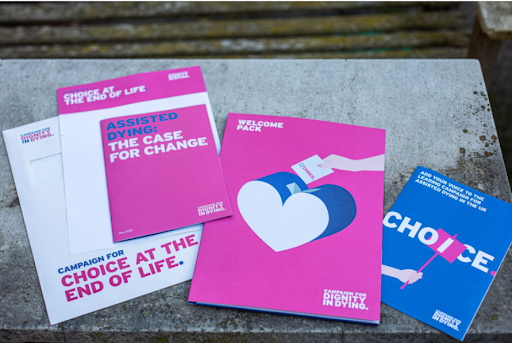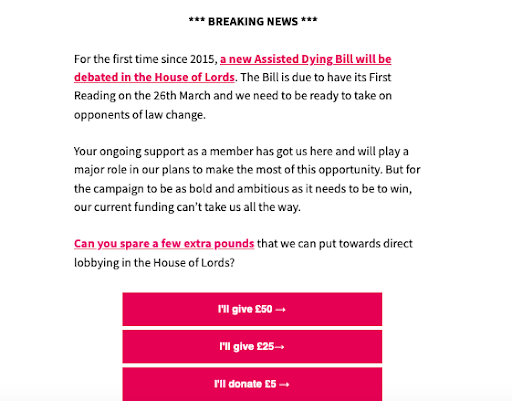At ENCCUK, Dignity in Dying and Forward Action shared how Agile working helped them to acquire 1,000 new members to become regular givers.
Dignity in Dying wanted to ramp up their membership acquisition and worked with mobilisation agency Forward Action to put together a strategy, using Agile ways of working.
The charity’s goal was to use Agile working to quickly understand what messaging and framing motivated people to become members, and at what parts of the supporter journey they signed up. Having these insights would drive more memberships and income.
Agile working is when you work in a very focused way, with an organisational working group that is cross-functional. You work in short periods, called sprints, and these last around 2 – 3 weeks.
Prior to the sprints, you need to set objectives and deliverables and prioritise them according to what would be most impactful and can be delivered in the timeframe. The sprint is where you work to deliver on your objectives and then at the end of the sprint you review what was achieved and agree what the next area of focus will be.

The membership offer at Dignity in Dying is their primary regular giving product and accounts for around 8 -10 % of their overall income. The majority of members (68%) pay by Direct Debit.
When members join they receive a campaigner’s information pack, a badge, three printed newsletters a year and invitations to events.
Interestingly, but probably not surprising, 87% of individual giving is also from members and most of the charity’s legacy giving also comes from its membership. This shows that they are committed to the cause.

They kicked off their sprint planning with a creative ideation session where they came up with all the different reasons why people would want to become members. For example, some members could have a personal connection but for others they are more motivated by the policy side of things and wanting to create change.
Once they brainstormed all the various reasons and motivations, they then prioritised the ones they wanted to focus on.
They then looked at all the various supporter journeys and identified all the touchpoints where there wasn’t an ask – and then added one in.
Lastly, they took all the learnings and ideas around the motivators and messages they wanted to test and created five emails that were sent out over a short period of two and a half weeks. They all had a slightly different focus, but all had a membership ask.
The framing messages tested included, ‘commitment to the cause’, ‘seeking a community’, ‘we’re so close – help us win’ and ‘we’re so close – don’t let us down’.
The ‘commitment to the cause’ framing was aimed at people who are more like activists and who might have a personal connection to the cause.
The ‘seeking a community’ messaging was aimed at people who may be terminally ill, or people who have experienced this with a loved one. Their motivation is likely to be that they want to join with others who share their views and want to see a change, together.
The last two framing messages were around a current policy campaign but one had more positive messaging – ‘we’re so close – help us win’ whilst the other was ‘we’re so close – don’t let us down’.
And the most successful in driving membership was…. ‘we’re so close – don’t let us down’

The five emails sent out in May alone drove 1,000 memberships with a 1 year projected income of £30,000.
Another 200 memberships were generated from ‘direct to donate’ Facebook ads, delivering a 294% return on ad spend. The audience on Facebook that was most successful in becoming members were from Dignity in Dying’s own email list.
Post-action donations accounted for 20% of the total memberships in May to July. An example of a ‘post-action’ included sending a membership ask to people who had just signed up to the mailing list.
Agile working can help you deliver lots in a short time and keeps you focussed on the end goal.
Direct to donate Facebook ads can deliver good results, particularly from a warm list. ‘Don’t let us down’ messaging and social proof worked well.
Sending reminder emails can boost your donations and give supporters the option to donate at all points in a journey – particularly when they have signed something and therefore aligned their values to yours.
If you’re looking to embark on a similar membership recruitment drive, the first thing you need to do is understand your donors better. Identify their motivations and test content that speaks to those motivations.
Next, assess where in your supporter journey people could donate and add in an ask!
Don’t be afraid to send multiple emails with the same ask in a short period and in quick succession.
Make sure to plan kicker emails for those who don’t take an action the first time and try to personalise them a bit more so that they sound like they’re from a friend rather than a marketing email.
Test your tactics in a short time period, reflect on what works and then go again.